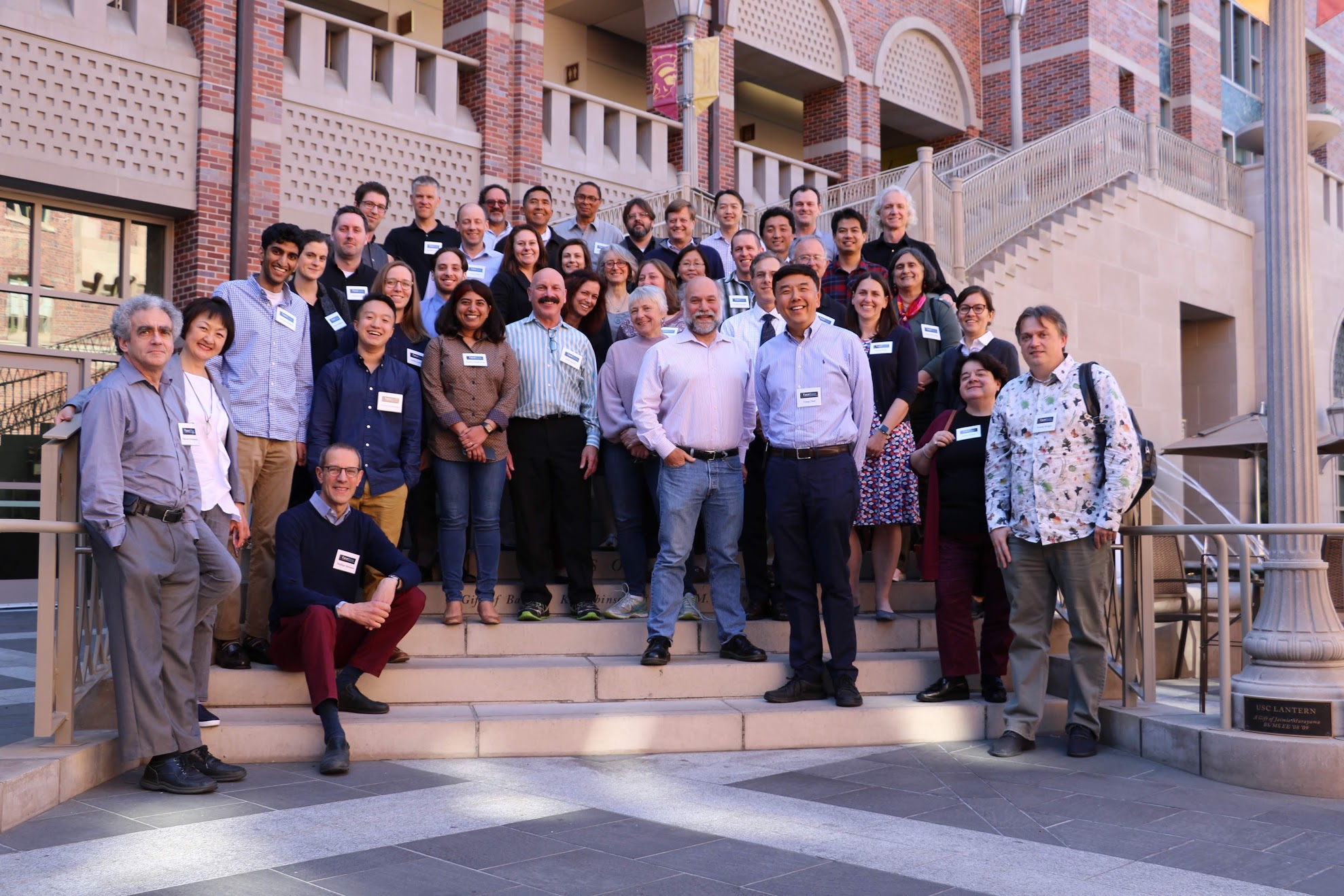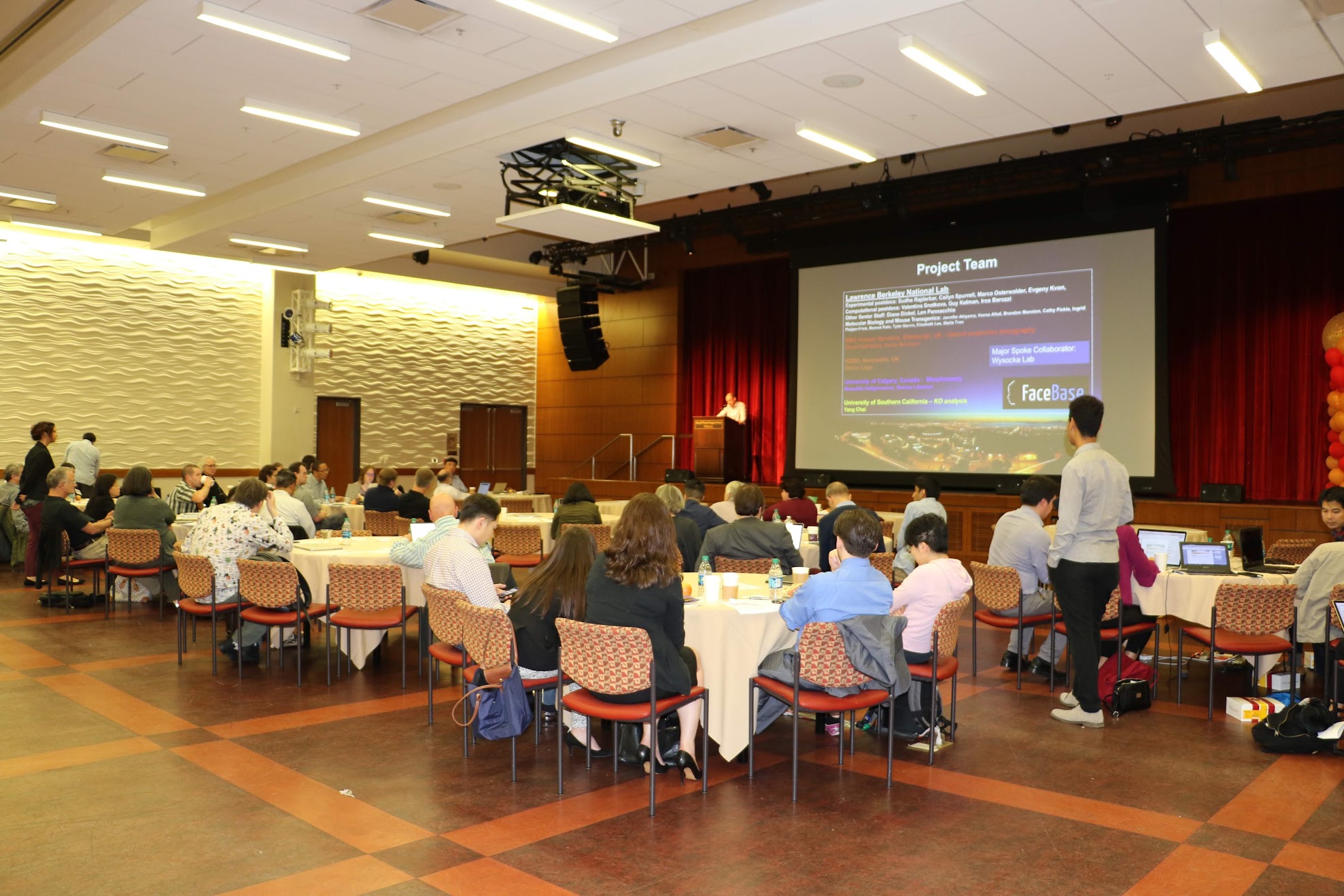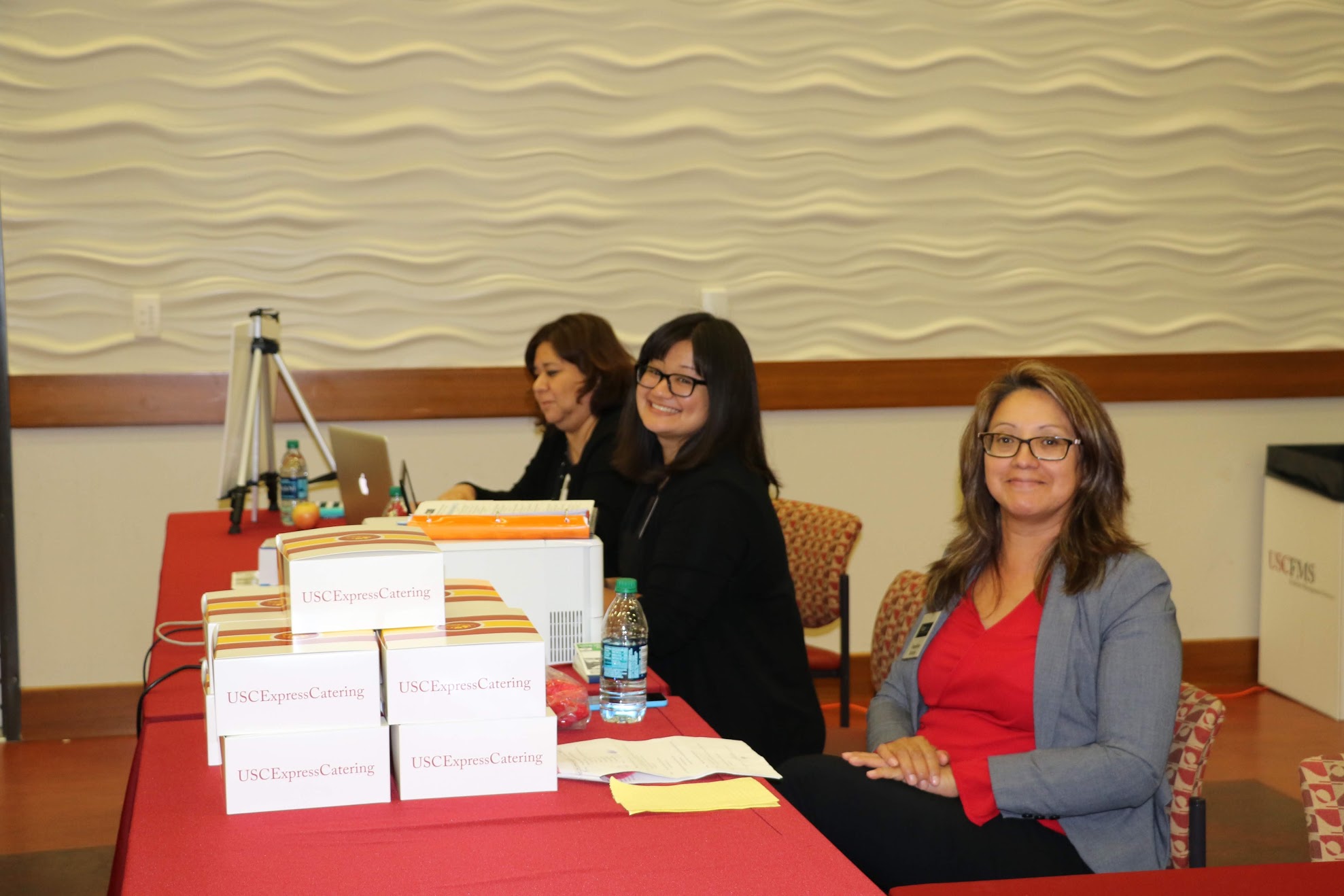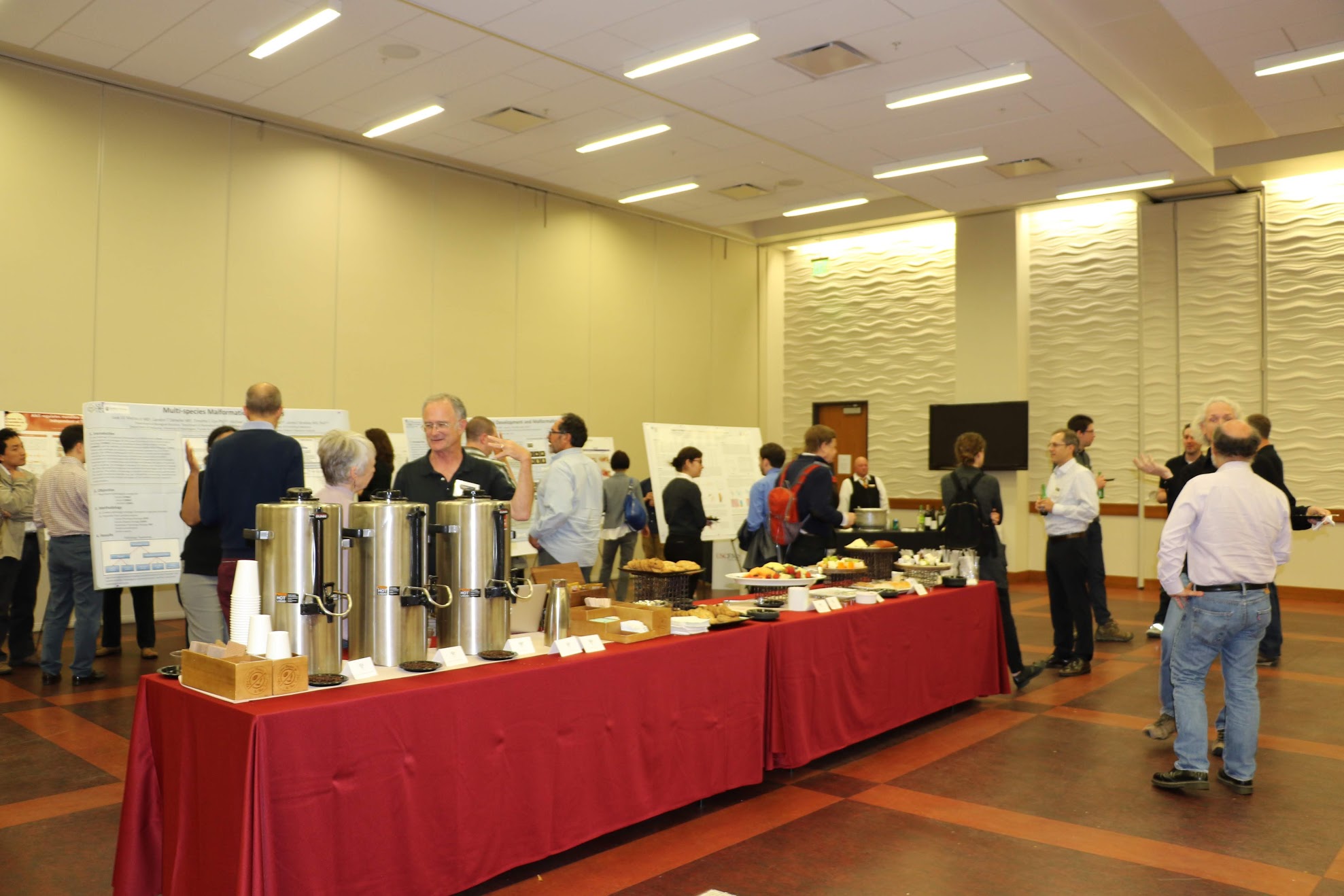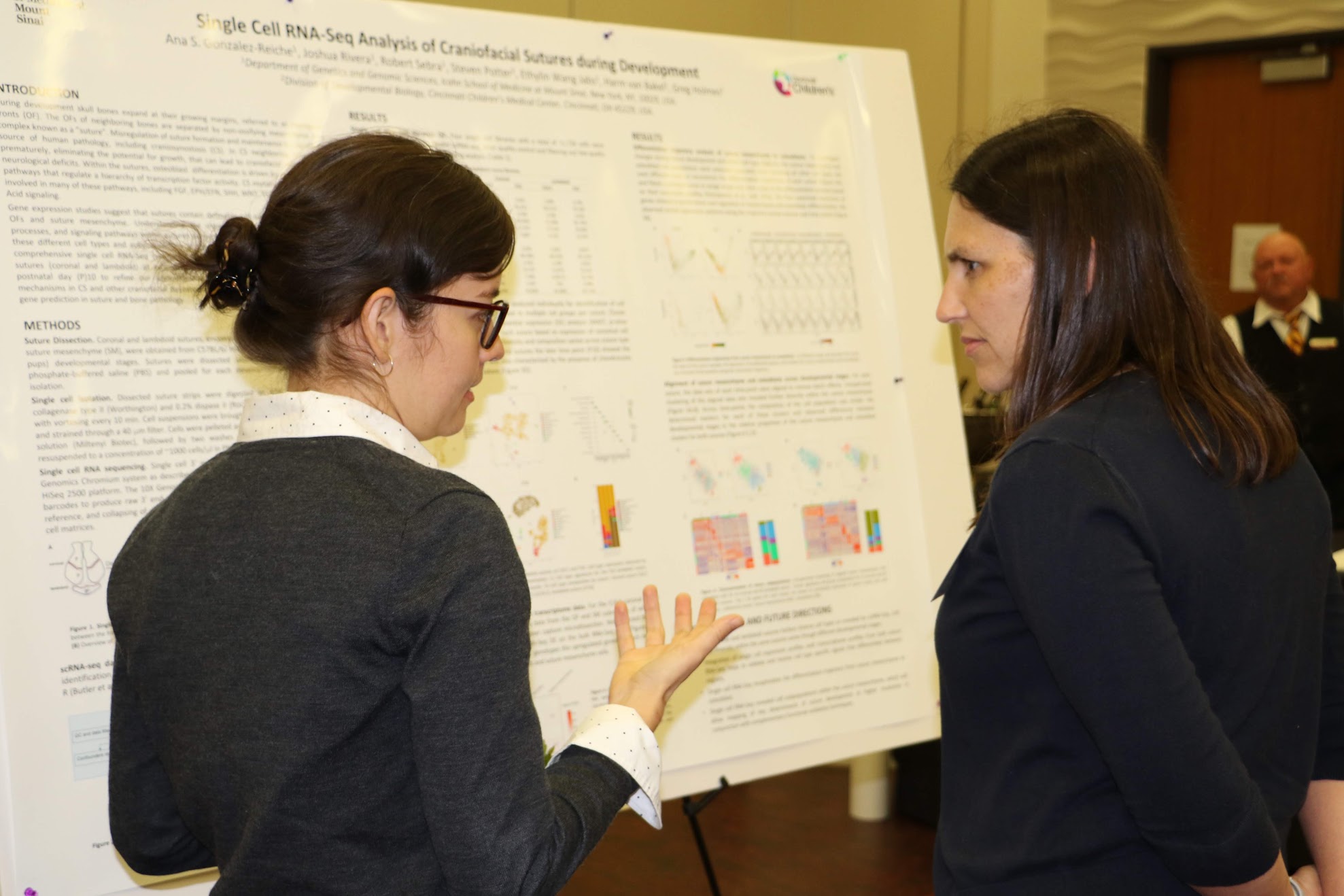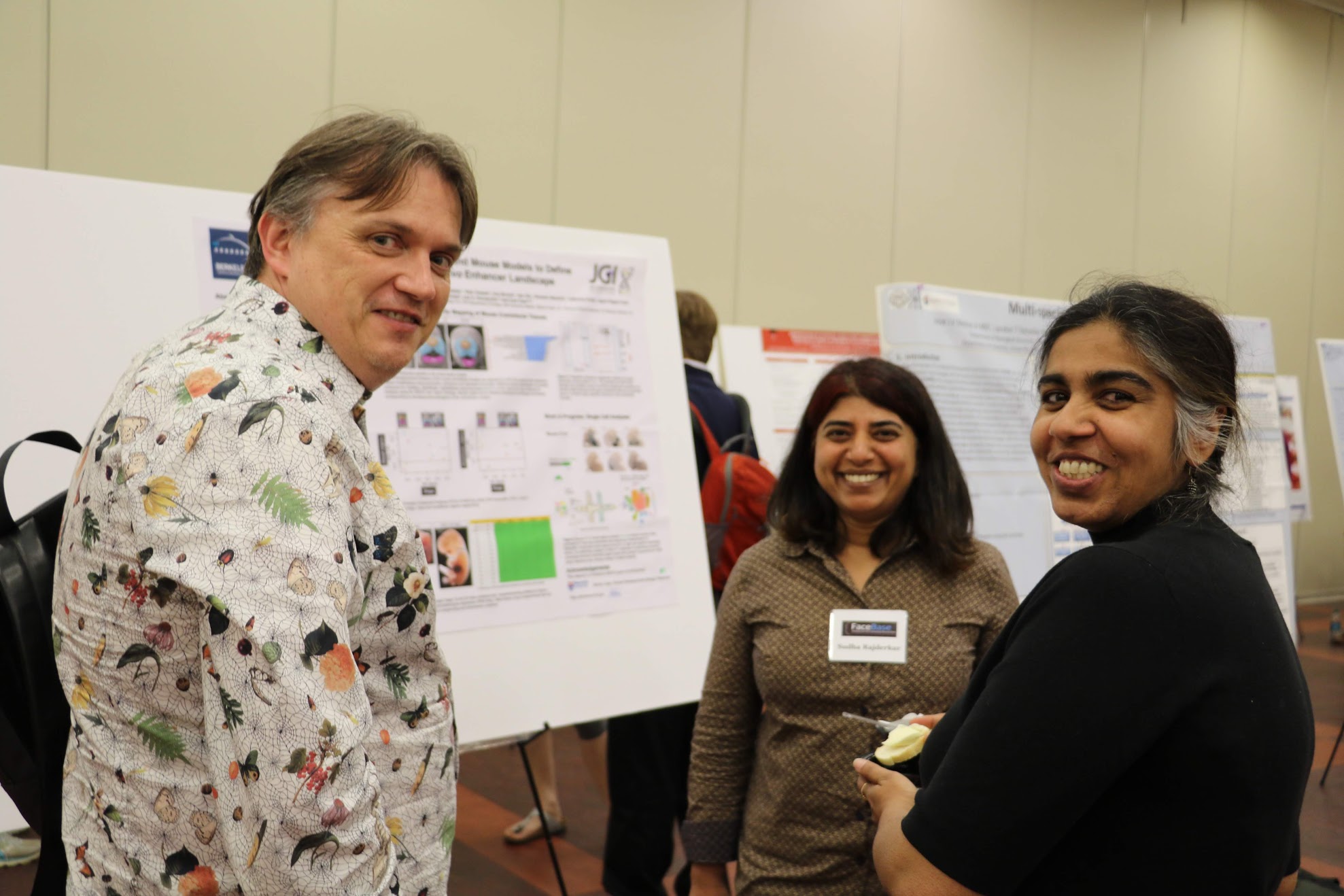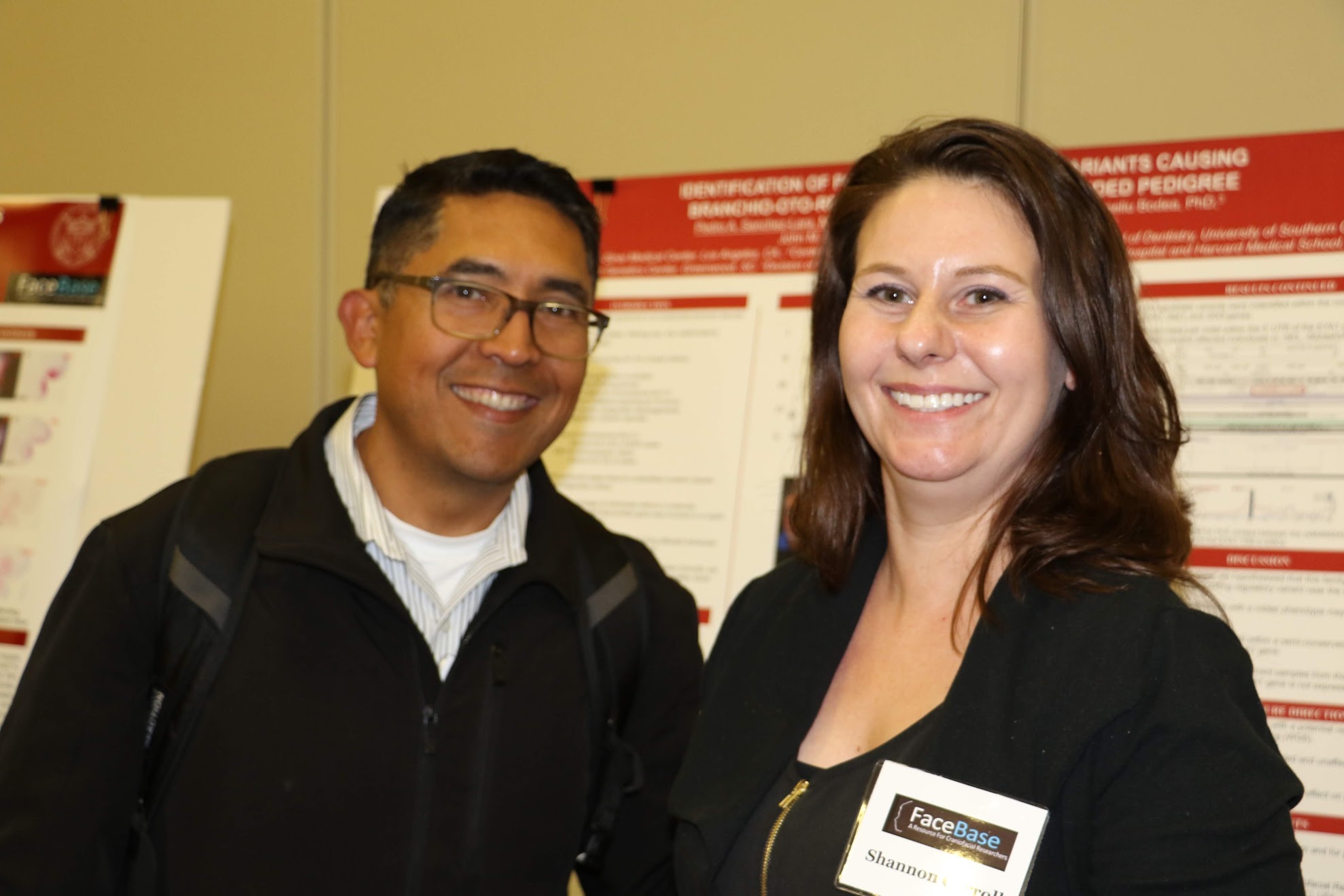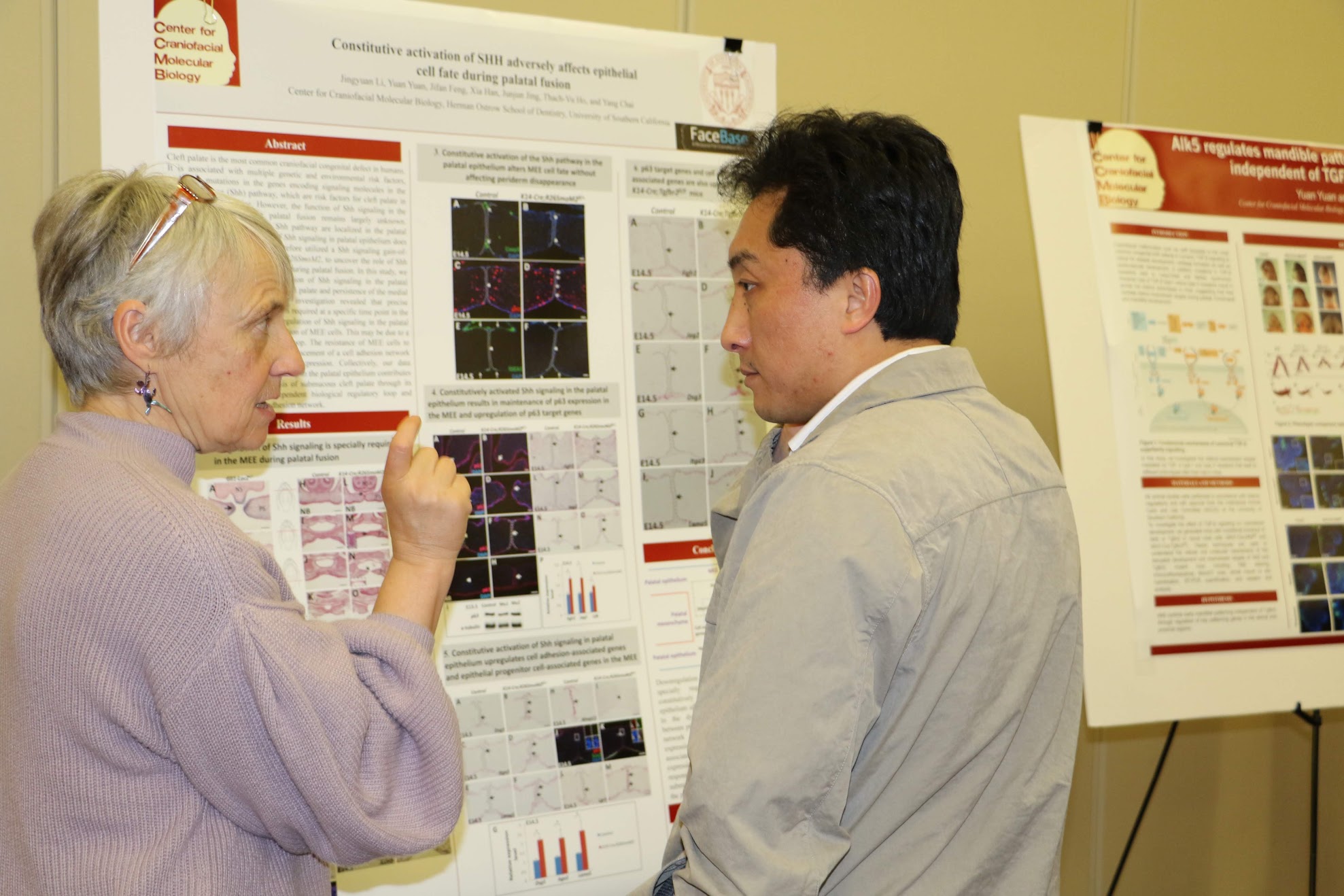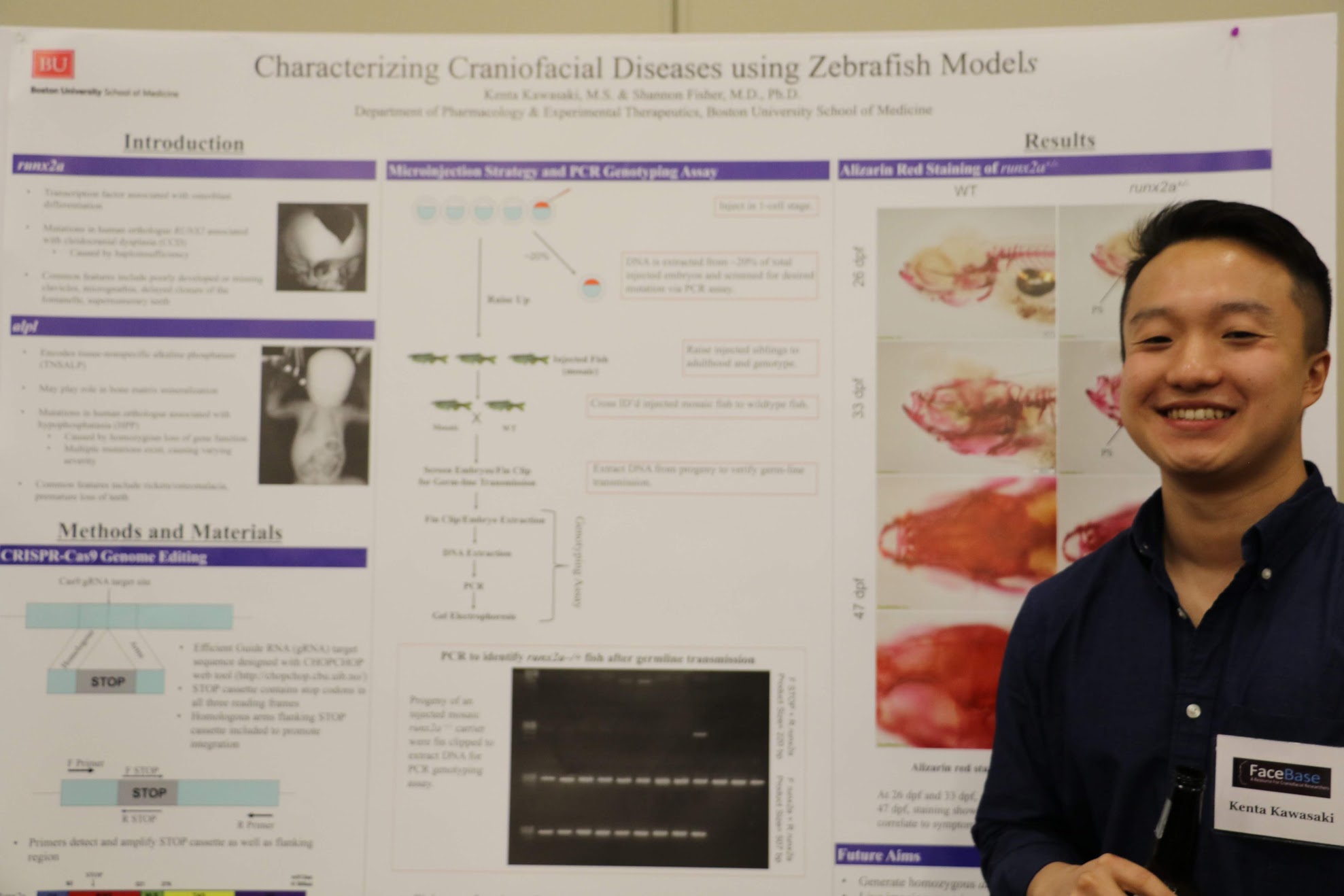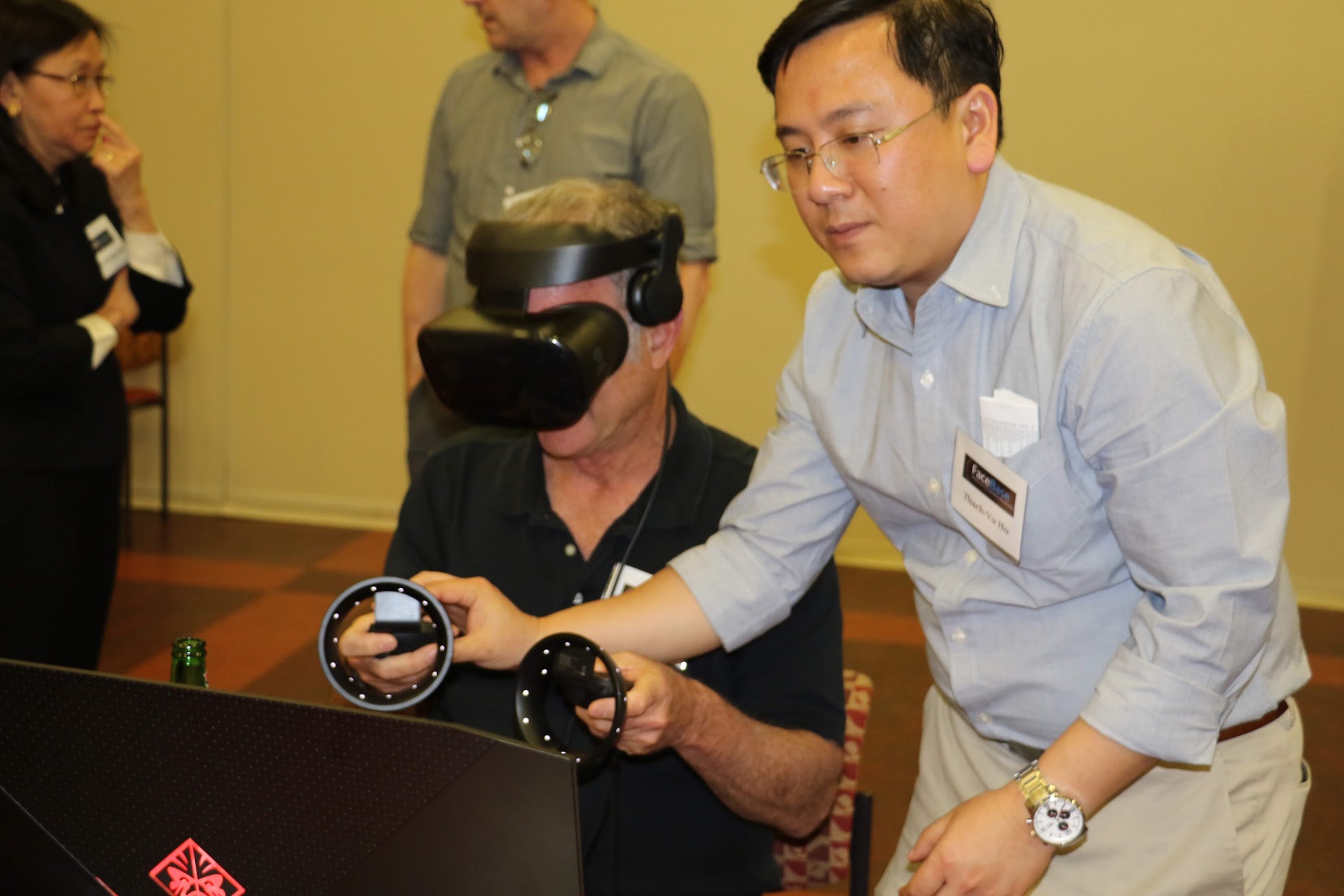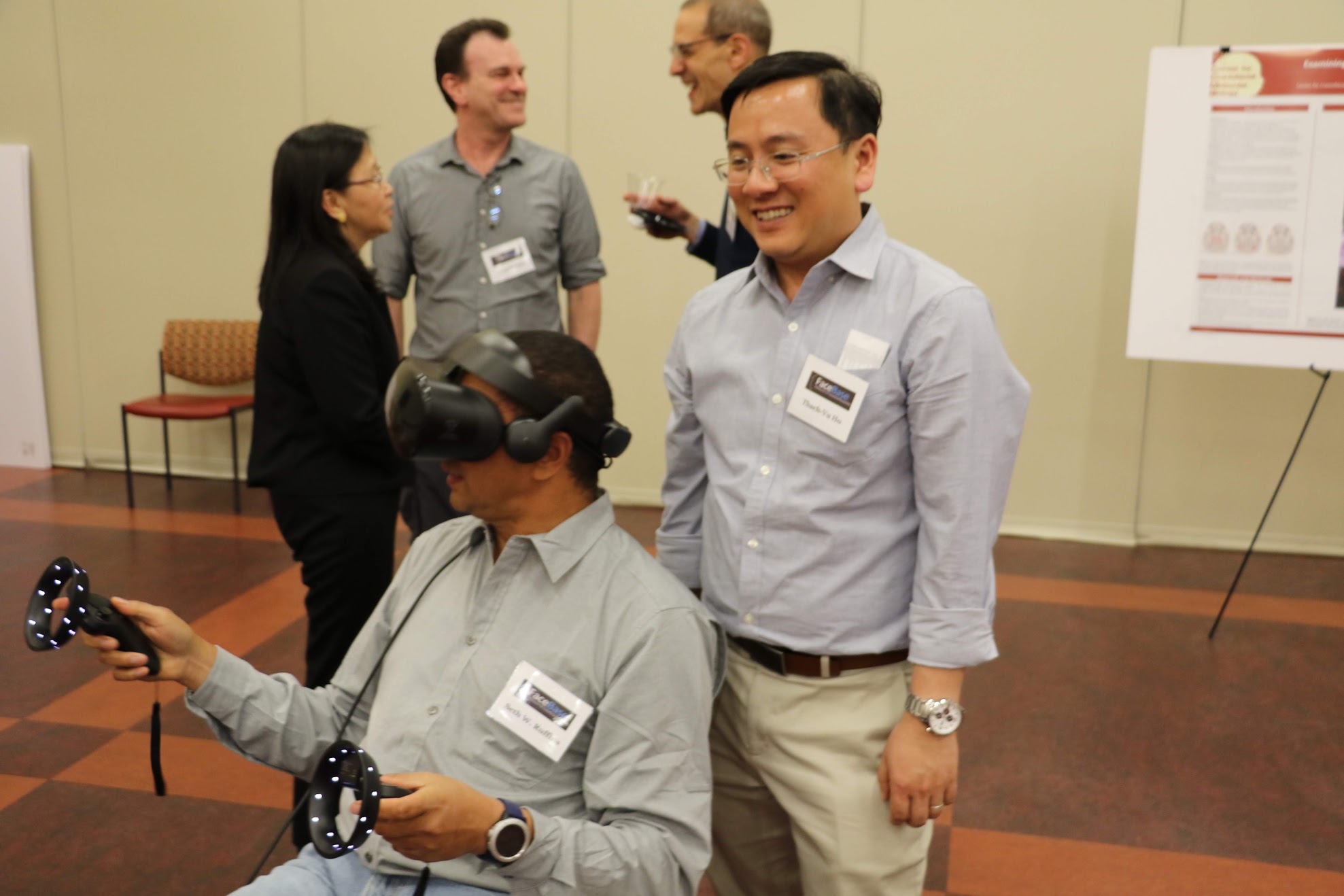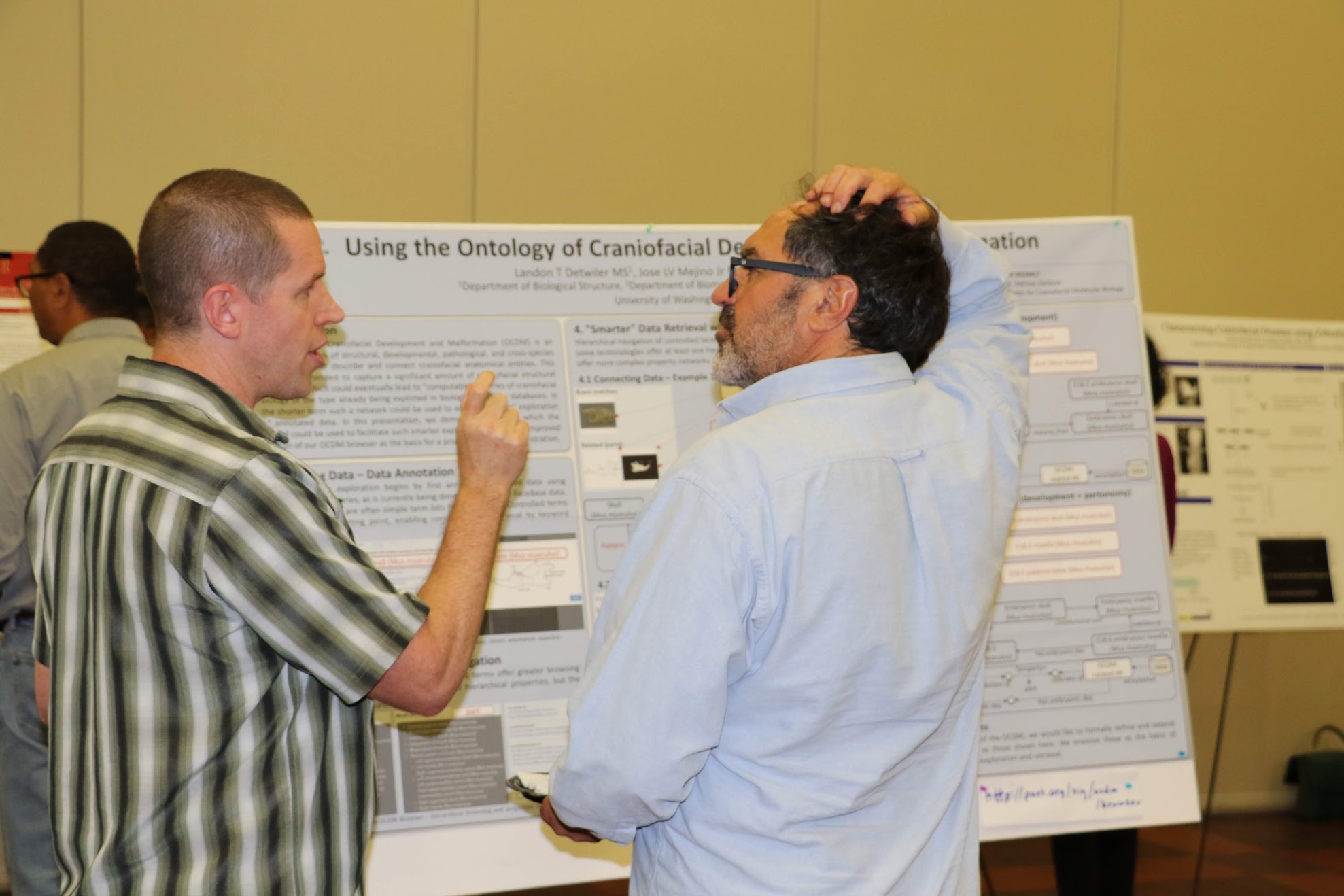News & Events
Final Recap Webinar on Monday, May 20th (29 April 2019)
As we close the second phase of FaceBase at the end of this month, we invite the craniofacial research community to join us for a special FaceBase 2 Recap webinar on Monday, May 20th where the FB2 projects will summarize their research and findings over the past 5 years. We will also delve into what the future of FaceBase will bring to the craniofacial research community.
If you would like to join us, please register using this form and we will send you the videoconferencing information and keep you updated on the details.
Date: Monday, May 20th
Start Time: 11:00 am Eastern / 8:00 am Pacific
End Time: 5:20 pm Eastern / 2:20 pm Pacific
You can find an agenda for the webinar here.
Photos, Slides and Videos available from the 2018 FaceBase Annual Meeting (30 May 2018)
This year’s annual meeting was another great opportunity for our spoke projects to see what everyone’s been up to and to share their work with the broader community. We now have posted the slides and videos from each of the talks on May 15th (Note that there are a couple that are not approved for sharing outside of the meeting.)
Special thanks go to Yang Chai, Linda Hattemar and the rest of the folks at the Center for Craniofacial Molecular Biology for organizing a wonderful, collaborative event for all.
We’ve posted presentations and videos from May 1st that have been approved for public viewing.
Here are some more photos from the meeting!
FaceBase Annual Meeting - Open to the Public on May 15, 2018 (09 April 2018)

The next annual meeting of the FaceBase Consortium will be held May 15-16 in Los Angeles, CA. The venue will be the Tutor Campus Center on the main campus of the University of Southern California. The first day of the meeting – Tuesday, May 15th – will be open to the general craniofacial research community and will be webcast.
During this day-long meeting, each FaceBase project will describe their project and the progress they’ve made in their particular focus on craniofacial research during the past year for FaceBase.
We are also excited to announce the Dr. Andrew McMahon, Director of the Stem Cell Institute, will be giving a talk at 3:00pm on “New Developments in GUDMAP and Possible Collaborations”.
To participate:
- Read the agenda for the public portion of meeting
- RSVP to attend Tuesday, May 15th either onsite or via webcast
(If you are a member of the FaceBase consortium, please contact help@facebase.org if you need help with internal registration/information.)
You can find more information on the event page.
UI Updates, New Datasets and Annual Meeting Dates (13 February 2018)
Read on for information about our latest data offerings, the latest UI updates to the Data Browser and dates for the next Annual Meeting.

Latest Datasets
Here are the latest data offerings from the FaceBase projects:
From Integrated research of functional genomics and craniofacial morphogenesis:
-
MicroCT scans of the head tissue of Wnt1-Cre;Alk5fl/fl at P0 (FB00000911, FB00000915 and FB00000916)
-
Another dataset of microCT scans of the skull of Wnt1-Cre;Alk5fl/fl at P0
-
Cell Proliferation Heat Maps of:
-
E 10.5 mouse embryo (two replicates: FB00000918 and FB00000919),
-
From Genomic and Transgenic Resources for Craniofacial Enhancer Studies:
-
4 datasets of transgenic mouse enhancer assays: mm1089, mm1094, mm1096, mm636
-
ChIP-seq of multiple histone marks and RNA-seq from CS18 human embryonic face tissue
UI Updates
We’ve been taking feedback from users and submission projects and are constantly working to improve the Data Browser experience. Below are some of the recent steps we’ve taken but there’ll be many more to come in the next couple of months!
-
Mouse age stages are sorted according to developmental stage (E8.5, …E10,… P0) rather than alphabetically.
-
No longer displaying the dataset thumbnails.
-
PubMed IDs are now displayed as either “PMID:xxxxx” or “Link to PubMed (PMID:xxxx)” depending on where they are displayed.
-
Vocabulary tags (phenotype, age stage, organism, experiment type, etc.) are now displayed towards the top of the page for a dataset rather than in a new section w/ heading for each.
-
Chromosome (when shown on a dataset page) is formatter per usual convention “chrN: start – end”
-
We’ve stopped automatically opening a new browser tab for every new page.
FaceBase Annual Meeting 2018
We also are happy to announce the next FaceBase Annual meeting is May 15th and 16th in Los Angeles. The first day will be open to the public and you can attend either onsite or virtually. Be on the look out for the public registration form.
13 New Datasets and New Search (06 November 2017)
FaceBase has added 13 new datasets as well as introduced a new filtering interface for browsing and searching for data.
New Filtering Interface!
We are happy to announce the release of a new filtering interface that allows you to select categories within the filtering sidebar, expand or collapse them and see search results update dynamically. You can also now perform free-text searches across results.
Check out the quick video overview below (less than 2 minutes)!
New Datasets
- Two mouse datasets from Hooper/Jones/Williams: RNA Dynamics in the Developing Mouse Face:
- FB00000891 - Temporal analysis of ectoderm and mesenchyme expression in the developing mouse facial prominences with 20 samples of miRNA data.
- The second dataset is one we mentioned a couple of months ago that has since been uploaded to the FaceBase website instead of requiring download from the Mendeley website. You can access it at: https://doi.org/10.17632/5y2hgyz5ng.1
- One human (protected access) datasets from Hallgrimsson/Klein/Spritz: Genetic Determinants of Orofacial Shape and Relationship to Cleft Lip/Palate:
- FB00000892 - 3D White Light Photogrammetry Images of North American Children from Denver and San Francisco. 750 assays of human genotype and phenotype data. This is controlled-access human data. To gain access to this data, you must first go through the process outlined here .
- Four mouse datasets from Holmes/Van Bakel/Jabs: Transcriptome Atlases of the Craniofacial Sutures: RNA-Seq data of rRNA-depleted total RNA samples extracted from laser capture microdissections of different mouse genotype and suture region at different embryonic development stages. Five biological replicate samples were profiled for each combination of mouse genotype and suture region.
- FB00000902 - Laser capture microdissections of the suture mesenchyme (SM), frontal osteogenic front (FR) and parietal osteogenic front (PA) of the coronal suture of C57BL/6J wild-type and Twist1 +/- mice at embryonic development stage TS26/E18.5.
- FB00000903 - Laser capture microdissections of the suture mesenchyme (SM), frontal osteogenic front (FR) and parietal osteogenic front (PA) of the coronal suture of C57BL/6J wild-type and Twist1 +/- mice at embryonic development stage TS24/E16.5.
- FB00000904 Laser capture microdissections of the suture mesenchyme (SM) and frontal osteogenic front (FR) of the frontal suture of C57BL/6J EIIA-Cre+;Fgfr2+/S252W (Apert) mice at embryonic development stages TS24/E16.5 and TS26/E18.5.
- FB00000906 Laser capture microdissections of the suture mesenchyme (SM) and premaxillary osteogenic front (PM) of the Interpremaxillary suture of C57BL/6J wild-type and C57BL/6J EIIA-Cre+;Fgfr2+/S252W (Apert) mice at embryonic development stages TS24/E16.5 and TS26/E18.5.
- Three mouse datasets from the Visel: Genomic and Transgenic Resources for Craniofacial Enhancer Studies project: They have generated histone ChIP-seq libraries for dissected mouse mandibular process, maxilla process and nose tissue. We performed ChIP-seq with markers of active chromatin (H3K27ac, H3K4me1) and repressive chromatin (H3K27me3). For each tissue we also generated a ChIP input library and total RNA-seq library. This is part of a series of experiments including parallel collection of dissected craniofacial tissues including maxilla, mandible and nose, and murine stages including e11.5, e13.5 and e15.5.
- FB00000909 - ChIP-seq and RNA-seq of mouse e13.5 maxillary process
- FB00000912 - ChIP-seq and RNA-seq of mouse e13.5 mandibular process
- FB00000914 - ChIP-seq and RNA-seq of mouse e13.5 nose
- Three human datasets from the Liao/Maas: Rapid Identification and Validation of Human Craniofacial Development Genes project: The purpose of this study is to collect, process, and study samples from individuals with known or possible genetic disease, and their family members. This is controlled-access human data. To gain access to this data, you must first go through the process outlined here . This trio of datasets consisted of treating the affected mother as the proband, and obtaining samples on the proband’s affected daughter and the unaffected maternal grandmother. Each dataset targets phenotypes for a different candidate gene.
- FB00000921 - FB0038_Trio Saliva_CDH1
- FB00000922 - FB0055_Trio Saliva_NFIX
- FB00000923 - FB0058_Trio Saliva_FBN2

